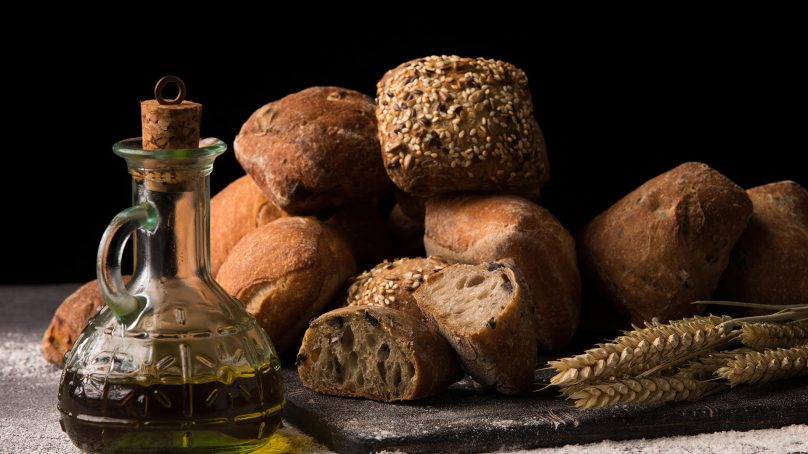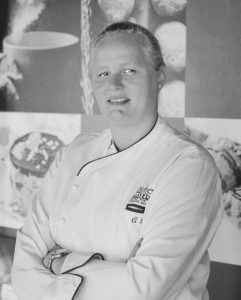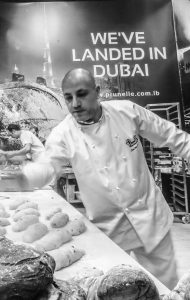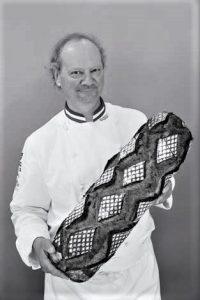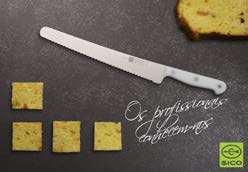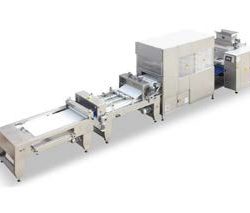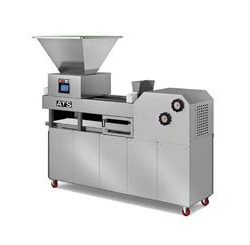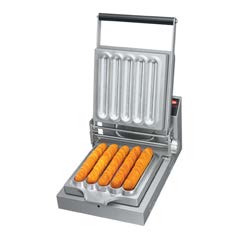Whether it’s down to bakers staying ahead of the curve by reinventing their products for today’s clientele or because even the most healthconscious consumers want to indulge every now and then, bakeryproducts continue to hold their own in today’s marketplace.
In a report published last year, the market research company Technavio said it expected the global bakery market to expand by USD 97.85 billion between 2018 and 2022 at a CAGR of close to 4 percent. Several factors look set to drive the industry’s expansion, ranging from rapid growth in the organic, vegan and healthier-alternatives segments to the rising popularity of good quality, fresh bakes and visually eye-catching options.
Success for sourdough
A staple on the shopping list of the health conscious, fermented foods, which provide ‘good’ bacteria that can contribute to a healthy digestive system, have found their way into the bakery market in the form of sourdough breads. Chef Roland Eitzinger – head of academics and Chef Christiane Trilck – head of faculty, Richemont Masterbaker Center for Excellence in Baking & Pastry, have both noticed the trend, describing sourdough breads as “definitely a big hit.” Sourdough bread differs from other varieties in that it relies on wild yeast and ‘good’ lactic acid bacteria already found in flour to facilitate the leavening process. The end result is bread which is easier to digest, nutritious and overall, better for our health, as Rodi Rizk, R&D manager, Prunelle SAL noted. “This bread is made through a fermentation process that boosts its digestibility, improves the availability of certain nutrients, and lowers its blood-sugar effects,” he explained.
Great grains make gains
The interest in sourdough bread forms part of a broader rising demand for artisan products which, while still niche, are increasing their market share as consumers give more thought to their health. Indemand varieties range from whole-wheat bread, which is rich in fiber, to flax bread, made primarily from wholegrain flours and highly nutritious flax seeds, brimming with plant-based omega-3 fatty acids. Alternative grains and blends of grains associated with health benefits, such as buckwheat, spelt, rye and quinoa, continue to strengthen their foothold in the market. Producers are also finding creative ways to incorporate beneficial and sought-after ingredients, including superfoods and plantbased proteins, into their recipes. With its focus on core simple ingredients, artisan bread has a natural audience in the ever-growing vegan segment, alongside non-vegans who are looking for ‘free-from’ and organic options. “We are fortunate to work with a timeless product that is both modern and steeped in heritage, providing a key source of vegetable protein, so the vegan trend has not affected us,” said Francois Pozzoli, master baker at the French artisan, family-run bakery, Maison Pozzoli.
In search of the facts
Rizk, meanwhile, believes the trend for artisan products is also linked to rising demand among today’s consumers to know where their food comes from and what’s in it, saying: “Artisan bread continues to grow in popularity as consumers shift their food spending toward authentic, clean label products.” A growing number of customers are seeking full traceability of their purchases and clear, fact-based product information, from manufacturing to delivery, in their quest to gain reassurance on issues such as whether local ingredients are used and the impact of end-to-end production on the broader environment. “Consumers are focusing on ethical and authentic choices, in terms of the range of products and services, looking at whether they’re local and organic, the carbon footprint and social responsibility,” Pozzoli said.
Time to indulge
While healthy options are drawing the crowds, most of us are still prepared to indulge ourselves from time to time with a baked treat, especially if it’s top quality and freshly baked. and freshly baked. and freshly baked. Hybrid products are among the innovations causing a buzz, such as brookies (brownies and cookies) and croissant-donuts, alongside everyday items given a creative twist. “Artisan breakfast pastries and colorful croissants are definitely a big hit,” said Chefs Eitzinger and Trilck. The addition of color and eye-catching decorations have taken on added importance in the Instagram era – think rainbow cookies and glittery cupcakes. Bakers are also keenly aware of the part that social media can play when it comes to gathering information on what their clients are looking for, according to Rizk. “Social media is a fantastic place to learn from our customers and tailor their requests into a product, since we know that 84 percent of people make purchases after reading about a product, and 89 percent of people use Instagram and other platforms to get some recipes,” he said.
Tools and technique
While baking has been around for centuries and its experts continue to
draw on traditional methods in their craft, innovation and modern technology undoubtedly have a part to play in meeting the requirements of the 21st.century’s marketplace, as Rizk explained. “Spiral-style mixers enable bakers to make larger batches of bread, with less oxidation of the dough from overmixing. Modern ovens use rotating racks, probes and microprocessor controls to provide even baking and precise control of both temperature and humidity levels while products are baking. This gives bakers unprecedented control over crust, browning and texture,” he said. Chefs Eitzinger and Trilck added that refrigeration and cooling equipment has become increasingly important, adding that for croissants and laminated doughs, a dough sheeter is a big advantage. “For us, innovation lies more in the process than in the equipment, Pozzoli noted. “The tool is in the service of the art rather than the other way round.”




